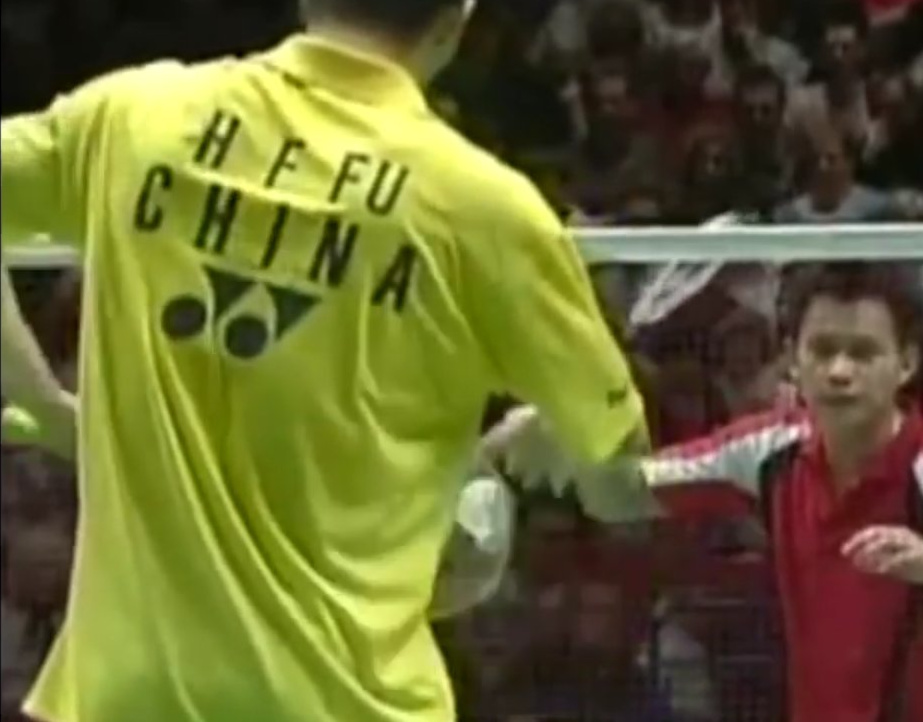Oh, I'm sorry, in that case I do agree that calls are inconsistent - but virtually no fault calls are wrong, it's just that some service judges are extremely liberal. However, this can and historically has been "solved" by referees instructing the umpires to be more strict at a given tournament. What did often follow were numerous complaints by fans and players alike.
Yes, and this is the very problem that I mentioned, that the rules are applied inconsistently. I suggest that the main reason for the inconsistency is a lack of objectivity. If the height were standardized then fault calls or non-calls can be objectively determined and service judges can feel more confident that they made the right call and thus, make calls more consistently. I agree that virtually all service fault calls are "correct" given the definition of "waist height", but that is not the problem. The problem is that a lot of the time, many serves that are even higher up on the body are not called, and suddenly the service judge decides to call a lower, (albeit, still too high), serve.
Incorrectly calling fault is way more damaging than letting an incorrect serve slide, for a number of reasons:
- The flow of the game is disrupted by the fault call, especially if both sides are equally close to the line (compare RTTO §1.3)
- As a fan, I prefer to see rallies, not fault calls. The immediate effect of a stringent policy would be dozens of fault calls per match or even game, and that would be detrimental to the enjoyment of the game (of course, players will likely adjust their serves).
- Incorrect fault calls will damage the trust of fans and players in technical officials.
- Incorrect fault calls open up the service judges to allegations of partisanship, whether justified or not
- The service judge would most likely not have followed RTTO §4.4
1) Either the serve is fault or not. If you are suggesting that service judges should let some faults slide because they do not want to disrupt the flow of game or the enjoyment of the fans, then that is what contributes to the inconsistency and distrust of officials. The distrust doesn't just come from nowhere, and in badminton, the problem is systemic.
2) There have already been cases under current rules where dozens of fault calls were suddenly enforced, in a recent men's doubles match for example. The exact match escapes me, but I believe it was between korea and china where suddenly every other serve was being faulted and the crowd was audibly agitated. It is under current rules that you are more likely to see inconsistencies in service calls.
3) I still do not agree that non-calls are less damaging. It really depends on who's perspective you are taking. From the players' perspectives, if your fault serve didn't get called, then it's good. But if you were on the receiving end up a, "drive serve", and lost the point as a result, then it is certainly very damaging to your match. Even for the fans, non-calls are very damaging if you were supporting the player(s) who were victimized as a result of a non-call. Everybody ultimately wants fairness above all else.
Actually, there is - why don't you post, say, 10 instances of photos where you think he wrongly called and we look at it? With modern technology - even smartphones are good enough - it is quite easy to take excellent pictures. Even the official video stream (especially the BEC ones) sometimes has pictures from service judge eye height.
I don't have the time to comb through the internet for pictures that could pass for proof or evidence of Freek Cox's service call accuracy. If such photos/vidoes even exist, certainly 10 examples are way too many to ask for. I have, however, personally witnessed him as a service judge at a recent Canadian Open Grand Prix in Richmond (maybe 2012, 2013?) where in the final of men's doubles, he repeatedly called faults, more than any other match all tournament, so I started carefully observing the server. I went through a mental checklist of service rules and they all seemed to be being followed, and sure enough, he called another fault. The crowd got very upset as a result of the repeated fault calls, and to the best of my ability, it did seem as though the serve was legal. It's subjective of course, which is exactly the problem I am bringing up that I believe fixed height would solve.
Oh, I though you wanted to measure the height of the tallest player entering each tournament. But the tallest player ever is surely a giant. How would you define player in the first place? Somebody with a BWF ranking? The tallest human ever to pick up a Badminton racket?
While I don't oppose a fixed height approach per se, I'd rather see where most players are serving now, and get to some nice round number? The previous fixed height experiment just said 110cm, which feels about right. Even if it could be determined who the tallest player and hist waist is, and even if that would be somewhere near where we are now (i.e. not 150cm or something crazy like that), I wouldn't want the laws to state a height of 129,52cm, as that would be quite hard to measure as well as hard to explain.
I am suggesting, "fixed height", as you call it, not changing the height each tournament depending on who enters. It can be the average height of players with BWF ranking or the highest waist of any player, either is fine, as long as it's fixed height. 110cm? Sure, let's go with that. Just make it consistent.
So the best serve in U11 competitions would now be some kind of drive with the racket arm stretched really high. Players and coaches would have to decide whether they want early good results (say, U13 world championship) or lay a better foundation for their future. I don't think these two goals should ever be in conflict any more than necessary. As it stands now, players use essentially the same technique from U11 to O19, with the added benefit that in the younger classes the serves are not as deadly, thus balancing out the lower reach, slower speed, and worse game knowledge of the receiver. The only aspect that changes as players grow is the angle of the serve shot, something that's quite easy to adjust. In contrast, the drive serve with a very high outstretched arm and hitting the shuttle at head height is very artificial and totally useless for taller players.
Yes, the serve will change as the player grows. This is no different in Table Tennis, where younger players serve with a virtual overhead motion, and yet they all adapt just fine.
[
QUOTE="phihag, post: 2471775, member: 115949"]Who would evaluate such a challenge? If you think of an automated system, I'd like to see how accurate an automated system would be able to determine
waist height (again, in the context of Badminton a technical term, unrelated to the medical definition of
waist).[/QUOTE]
A camera, or automated review system, as you call it, would review the challenge. It would not need to determine, "waist height", because I am proposing a fixed height service rule change. If it sees the shuttle above the height line, then it's fault. It seems very simple to me. I am saying that it is only with an objective fixed height rule change can challenges to service calls even be possible.

